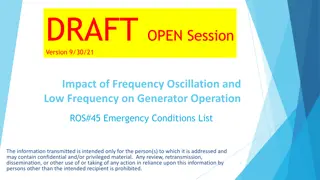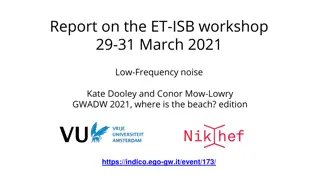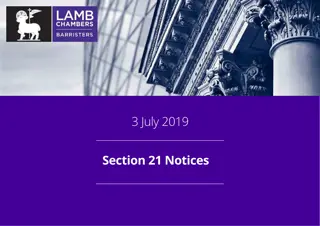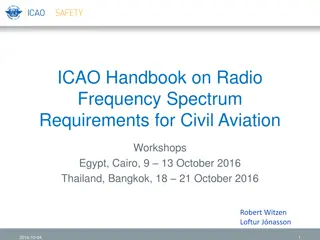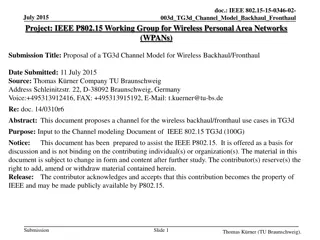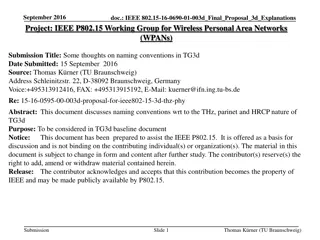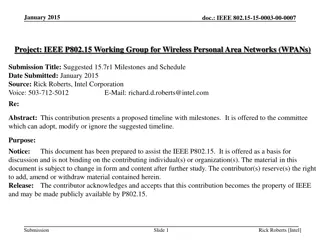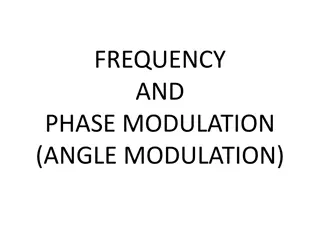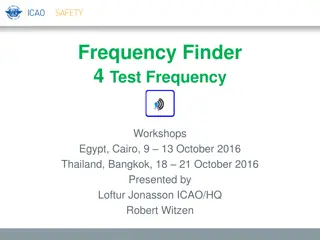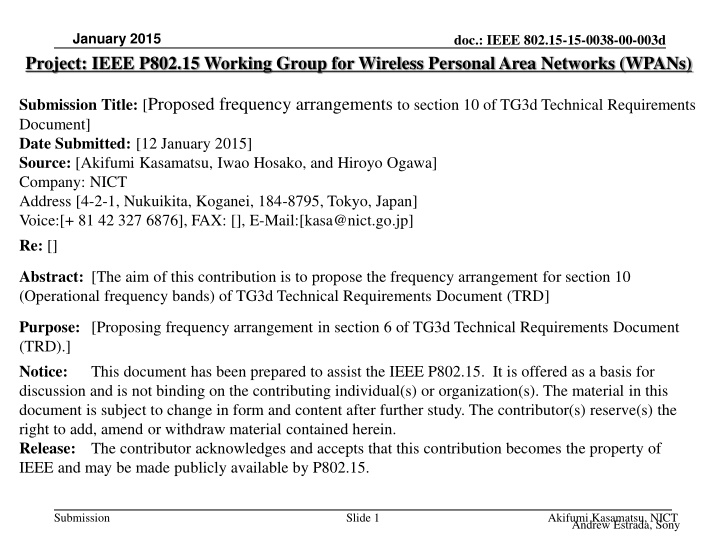
Frequency Arrangement Proposal for IEEE 802.15 WPANs
Explore the proposed frequency arrangements for operational bands in IEEE 802.15 WPANs, including channel bonding and allocated frequency bands up to 295.2 GHz. This document outlines the utilization of specific bandwidths and bands for mobile services within the technical requirements.
Download Presentation

Please find below an Image/Link to download the presentation.
The content on the website is provided AS IS for your information and personal use only. It may not be sold, licensed, or shared on other websites without obtaining consent from the author. If you encounter any issues during the download, it is possible that the publisher has removed the file from their server.
You are allowed to download the files provided on this website for personal or commercial use, subject to the condition that they are used lawfully. All files are the property of their respective owners.
The content on the website is provided AS IS for your information and personal use only. It may not be sold, licensed, or shared on other websites without obtaining consent from the author.
E N D
Presentation Transcript
January 2015 doc.: IEEE 802.15-15-0038-00-003d Project: IEEE P802.15 Working Group for Wireless Personal Area Networks (WPANs) Submission Title: [Proposed frequency arrangements to section 10 of TG3d Technical Requirements Document] Date Submitted: [12 January 2015] Source: [Akifumi Kasamatsu, Iwao Hosako, and Hiroyo Ogawa] Company: NICT Address [4-2-1, Nukuikita, Koganei, 184-8795, Tokyo, Japan] Voice:[+ 81 42 327 6876], FAX: [], E-Mail:[kasa@nict.go.jp] Re: [] Abstract: [The aim of this contribution is to propose the frequency arrangement for section 10 (Operational frequency bands) of TG3d Technical Requirements Document (TRD] Purpose: [Proposing frequency arrangement in section 6 of TG3d Technical Requirements Document (TRD).] Notice: This document has been prepared to assist the IEEE P802.15. It is offered as a basis for discussion and is not binding on the contributing individual(s) or organization(s). The material in this document is subject to change in form and content after further study. The contributor(s) reserve(s) the right to add, amend or withdraw material contained herein. Release: The contributor acknowledges and accepts that this contribution becomes the property of IEEE and may be made publicly available by P802.15. Submission Slide 1 Akifumi Kasamatsu, NICT Andrew Estrada, Sony
January 2015 doc.: IEEE 802.15-15-0038-00-003d Frequency Allocation below 275 GHz in Radio Regulation Allocation to services 250-252 GHz EARTH EXPLORATION-SATELLITE (passive) RADIO ASTRONOMY SPACE RESEARCH (passive) 5.340 5.563A 252-265 GHz FIXED MOBILE MOBILE-SATELLITE (Earth-to-space) RADIO ASTRONOMY RADIONAVIGATION RADIONAVIGATION-SATELLITE 5.149 5.554 265-275 GHz FIXED FIXED-SATELLITE (Earth-to-space) MOBILE RADIO ASTRONOMY Submission Slide 2 Akifumi Kasamatsu, NICT
January 2015 doc.: IEEE 802.15-15-0038-00-003d Proposed Frequency Arrangement CH1 CH2 CH3 CH4 Based on IEEE802.15.3c 2.160GHz 2.160GHz 2.160GHz 2.160GHz 8.640GHz 8.640GHz 8.640GHz 8.640GHz 8.640GHz BW=43.2GHz 252GHz 295.2GHz Submission Slide 3 Akifumi Kasamatsu, NICT
January 2015 doc.: IEEE 802.15-15-0038-00-003d Proposal To use the same channel bandwidth specified by IEEE 802.15.3c as the first basic channel (BW=2.160 GHz). Four bonded channel bonding is applied to create the second basic channel (BW=8.640 GHz). To utilize the already allocated band of 252-275 GHz to mobile services. To add the additional band of 275-295.2 GHz for mobile services. To include this channel arrangement in section 10 as the operational frequency bands. Submission Slide 4 Akifumi Kasamatsu, NICT


